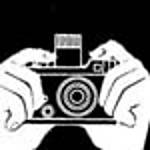Gee... I have no idea what's wrong. Everything works fine on my computer.
Here is this picture again:

OK, it's high time for a final cut of the blister problem. I'll do a smooth wing! I'm not an expert neither so I have to trust someone and Martin Waligorski is trustworthy enough. Here is what I found at his website
www.spitfiresite.com:
Blisters above wheel wells
With the introduction of the C or "universal" wing on the Mk. V, the "D"-shaped bump above the wheel wells disappeared. This was a consequence of an increased forward rake of the extended undercarriage legs resulting in less space being needed for the wheel when retracted. Thus all Spitfires Mk. Vc and early Mk. IXs had completely flat wheel well roofs.
(This statement however, may be still open to discussion: At least some early Spitfires Mk. IXc did have bulges over the wheel well, as can be seen on the Mk. IXc preserved at TaQ'ali museum in Malta. It is possible that this modification (No. 529) was introduced already on the Mk. VC, replacing the previous overwing "fences" with thicker-gauge skin, bulges and internal stiffeners in the wheel wells. - Ed. Thanks to Edgar Brooks for information on this item).
Then, at some point, a second type of wheel well roof blisters began to appear, this time of teardrop shape. These are especially frequent among currently airworthy examples.
According to Rolf Meum, who has accumulated 100+ hours of Spitfire flying with the Old Flying Machine Company, Duxford, the teardrop-shaped blisters above the wheel wells correlate to a modified wheel axle geometry adapted to tarmac/concrete runway operation. The original "grassfield" undercarriage had a substantial toe-in. As tarmac, concrete and PSP runways became usual during the course of the war, the toe-in resulted in severe wear on the port main wheel due to the engine torque during take-off. With the modification, the toe-in was decreased, but the wheels could no longer lie flat in the wheel wells and therefore needed more space to fit.
This may explain why the blisters are frequently seen on surviving warbirds and other post-war Spitfires while being rather rare on pictures taken during the war.

Teardrop-shaped blister over the wheel well roof characteristic of the modified undercarriage.
[Martin Waligorski]
 - picture from the Airfix website.
- picture from the Airfix website.
 , gotta fix it for Airfix
, gotta fix it for Airfix

































































